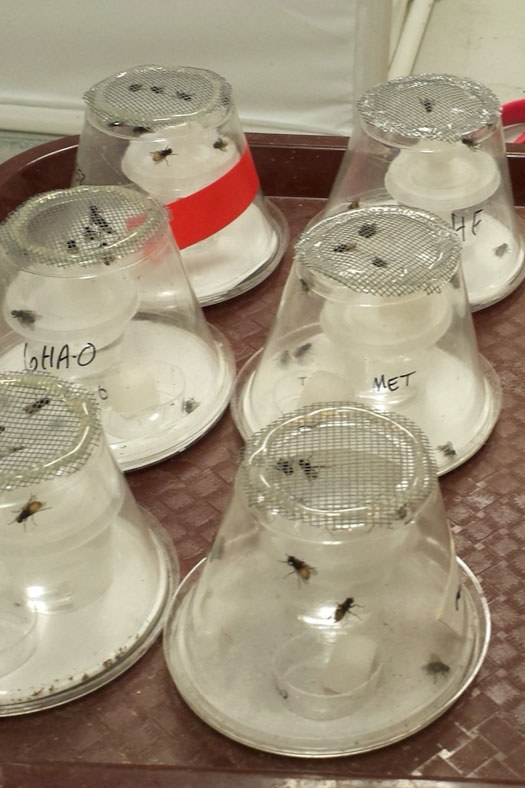Alex Pagac, a member of Erika Machtinger’s veterinary entomology lab

House flies being tested for pathogens
Poultry farmers everywhere share a common problem: an overpopulation of house flies in their poultry houses. These flies can pick up pathogens from chicken manure, increasing the risk of spreading disease in the animals and ultimately causing food-borne illnesses for some unlucky consumers. To handle this problem, many farmers must rely on pesticides that require labor-intensive safety practices to prevent human and animal exposure. So, is there another alternative to combating these destructive pests? It may be lurking within the flies themselves.
Alex Pagac, a member of Erika Machtinger's veterinary entomology lab at Penn State University, is working to provide a "safe, cost effective alternative" for controlling house flies by using fungi as a biocontrol method. Flies often die as a result of fungi that they acquire from soil. If a virulent fungus is identified, it could be used in a larger scale to control populations of house flies.
So how do they identify and isolate the fungi? Pagac cares for house flies caught in manure pits under local Pennsylvania poultry houses and puts them onto moist filter paper plates to observe fungal growth after death. Once the "fuzzy" and often "colorful" fruiting bodies grow out of the flies, they are sent off to the USDA where the fungi are identified and isolated. Living flies are then exposed to the fungi and the USDA records the percentage that die. This information can potentially be used to develop fungal treatments that farmers can deploy in their poultry houses.
Due to their "hardiness" and ability to adapt, house flies can be difficult to manage but there may be a way to effectively control them in the not-so-distant future. Pagac states that "if successful, it would improve the health and safety of both animals and humans in this industry." This would be critical in an industry that was valued at $46.7 million for US chicken sales alone in 2017. Beyond poultry production, this method could theoretically be used wherever house flies and related muscid species are a pest (so almost everywhere). Although the solution appears sinister in nature, its development could lead to some very happy farmers.

